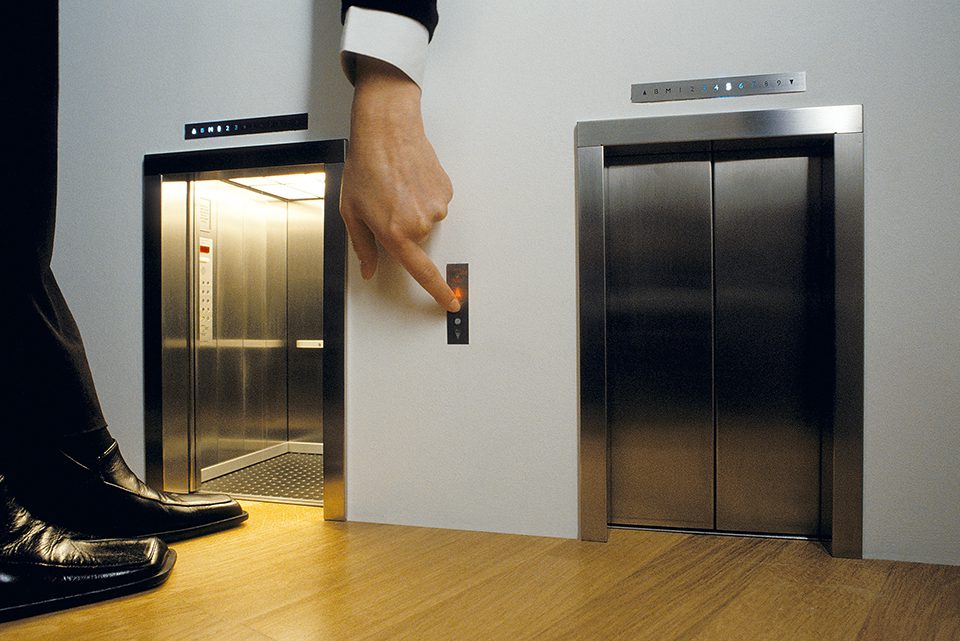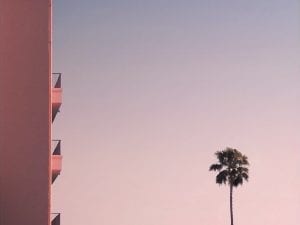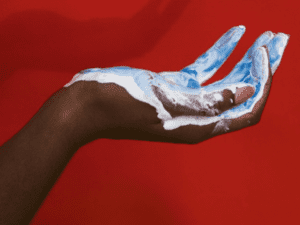Inviting a close examination of artworks based on commonplace objects and situations, Lifelike is an international, multigenerational group exhibition that surveys over 90 works from 50 artists from the 1960s to the present day.
Sigmund Freud once stated: “The uncanny was not to be found in the exotic but the everyday.” The uncanny, that which is known but not familiar, has become a fixation for many artists working in the 20th and 21st centuries. The status of the art object is called into question when everyday objects are re-presented as art, as are everyday objects called into question when they are laboriously re-created by artists using new techniques and materials. These art objects are exceedingly realistic, often surreal in their appropriation of the visual characteristics of the object (or person) they are meant to represent. The tendency towards the hyper-real in art, in particular from the 1960s onwards, will be the focus of an exhibition this spring at the Walker Art Center. Curated by Siri Engberg, the show (entitled Lifelike) will include roughly 90 works by over 50 artists: artists for whom the banal and everyday is the focus of their oeuvres. The curatorial framework which structures the show is one that is fixed on the Duchampian notion of taking an everyday object and by placing it within a new context – the white walls of a gallery – or creating it in a new form, and thereby giving that object new meaning. Engberg states that these objects “have been given new life through an artist’s hand.”
The show is structured around five major themes: Common Objects, the Uncanny, Handmade Sleight of Hand, Realism into Abstraction, and Special Effects, and thus encompasses various media and generations of artists. Chronologically, the show begins with artists practicing during the 1960s (Gerhard Richter, Chuck Close and Vija Celmins, for example), who somehow defied categorisation as they were neither Pop nor Photorealist artists: “They were preoccupied with mundane subject matter that was not about shiny consumerism and urban life, but about the everyday in all its ordinariness.” The exhibition initially arose through Engberg’s exploration of photorealism in art and subsequently expanded to include her wider investigation of hyper-realist tendencies in sculpture as well. Hyperrealism is succinctly defined by Jean Baudrillard, in a 1976 thesis, as “the meticulous reduplication of the real, preferably through another, reproductive medium” with the real being defined as “that for which it is possible to provide an equivalent representation.” The simulation of the real object results in objects and images which often seem an optical illusion, bridging the gap between the real and imaginary.
There is a trauma of signification in many of these hyper-realist works, with the objects’ meaning being defined not by its true function but rather by its selection and isolation from reality. This trauma of meaning was first investigated by modern artists, such as Marcel Duchamp, for whom the quotidian in art was of paramount concern and inquiry. The works selected for the exhibition are each rooted in this Duchampian notion of the readymade, banal objects re-presented as an art object, but in this context the “remade Readymade.” Engberg calls this the “uncanny valley where things appear convincingly real while still containing a nagging hint of artifice” and it is a key element to the exhibition.
The emphasis on the handmade, rather than the technological, is heavily emphasised by Engberg as an important component of the work of the exhibiting artists, and she says that for many it is “the rigorously-prescribed process behind the work [that] is more important than the visual product left behind.” Celmins’ 1967 work, Eraser, appears to be what its name purports it to be: an eraser. It is, though, an eraser made of acrylic painted wood – a hyper-real eraser – and thus Celmins forces her audience to consider its basic physical properties as well as signified meaning. The handmade sunflower seeds of Ai Weiwei, each seed made of painted cast porcelain, are of the same hyperrealist strain as Celmins’ Eraser and the work of artists such as Gavin Turk. This return to a craft-based art, to the handmade, is part of a larger societal movement to slow down and return to the traditional legacy of production. Technology has enabled artists to expand their oeuvres, to produce novel, exciting works that they were previously incapable of, yet there is still a resistance to this change and Engberg says that many of the works selected for the exhibition “are about labour, fastidious craftsmanship, and often a very conceptual, process-orientated approach to working.”
Turk is an artist who first came to fame in the early 1990s when he was denied his MA from the Royal College for submitting a blue heritage plaque in his studio which stated: “Gavin Turk worked here, 1989-1991” as his final piece. His succeeding works include a silkscreen print entitled Pop (which was included in the 1993 YBA Sensation exhibition) and have subsequently been surrounded by controversy, most recently and publicly perhaps with the theft of a brick which he was exhibiting at Area 10 Project Space in Peckham, London. The brick, number eight in a series of ten produced by the artist, was worth £3,000 – and was replaced with a 40p version. Regardless of the debates that surround his work, Turk, like the artist Jud Nelson, is interested in challenging expectations; he takes as his subject an everyday object and re-creates that object in an unfamiliar and unwieldy material creating a trompe l’oeil effect. T.P. VIII, a 1982 work by Nelson, is of a roll of ordinary white toilet paper – but made of carrara marble – whereas Nomad, a 2003 work by Turk, is a sleeping bag made of painted bronze. Both objects, on their appearance alone, belie the hard, durable material of their making. Turk repeats this visual gymnastics of deceit again with his 2004 work Pile, a pile of what appears to be simply black bin bags, but is in actuality a bronze cast of six bin bags arranged in a group, painted to look real. These works are at once surreal and fantastical in their imitation of a real object.
These surreal aspects of many of the selected works are based in their creation as constructed, crafted realities: this doubling transforms the aesthetic of the pieces and creates a dialogue between the audience and the work. Engberg states that this inclusion of the viewer into the narrative of the work is perhaps most directly related to the section of the show entitled Special Effects: The Real as Spectacle. The selected artists for this section play with the audience, whether through size, material or known realities that are then turned on their head. Maurizio Cattelan’s Untitled (2001) is an elevator, appearing to be fully operational, but produced in miniature as it stands just a few inches in height. This reduction in scale, of something one rarely (if ever) sees so small confounds the viewer. Cattelan’s veristic sculptures are not always humourous and playful, but can often be quite critical of society and the art historical canon. His 1996 work, Another Fucking Readymade, consists of the works of another artist, which he stole from a nearby gallery in Amsterdam. Cattelan’s gallery, Galerie Perrotin, describes the work as: “Crated works from a Stolen Exhibition; Dimensions Variable; Unique.” The work is not just a critique but a challenge to the idea of the “art object”; his readymade goes beyond that of the Duchampian definition and subverts it completely. The tendency to “poke fun” at Duchamp’s influence on conceptual art is epitomised by Sherrie Levine’s 1991 work Fountain, a replica of Duchamp’s Fountain (1917), arguably one of his most famous works, consisting of a white porcelain urinal, signed with his pseudonym “R. Mutt 1917.” Levine’s version, cast in bronze, ensures that the urinal is not just elevated to being an “art object” by its placement within a gallery, but also through its production in “real” art materials.
Engberg has devoted an entire portion of the exhibition to this aforementioned idea of the “surreal”, specifically as it relates to the uncanny. Robert Gober in particular is highlighted by Engberg as explicitly focused on this Freudian notion with his works playing not only with scale, but also with the disorientating effect of placement. It is therefore fitting to find out that one of Gober’s previous jobs was to craft and build dollhouses: reality in miniature. Engberg describes his work as “highly psychological and somewhat unsettling”, particularly in his creation of domestic objects such as a sink or drain, and their placement within the gallery setting. These familiar objects become alien outside of their functional home, as without plumbing they lose their meaning and purpose. Like Duchamp’s Fountain, Gober’s sinks and drains recall the domestic environment and simultaneously assault the conventional notion of the “art object”. Art has been considered superfluous, as an excessive luxury, by many and what is more decadent than a sink which cannot be used? There is an inherent sense of loss to these objects that are without function, a certain sense of melancholy, and it is this unfamiliar, disquieting feeling that Gober’s works induce in his audience.
Keith Edmier takes this one step further with Bremen Towne (2008), a full-scale reproduction installation of the kitchen of his childhood home in the Chicago suburb of Tinley Park. Edmier reclaims his past through the objects and space of his childhood, but it is a reclamation of the physical space of his memories rather than a physical appropriation of the actual objects of his past. The kitchen is unusable; it is without function just as Gober’s sinks are, and is merely a representation of a remembered reality. James Casebere recreates architectural sites in the same manner as Edmier, but instead renders them in miniature utilising cardboard, Styrofoam and other such materials, and then photographs the resulting edifices with the finished photograph as the final work, rather than the constructed models. His constructed environments are finely executed, so much so that we are easily fooled into thinking that the images are of existing buildings or interiors. The photographed “spaces” are devoid of human presence, resembling empty theatre stages, and tensely wrought with a fragility that becomes much more palpable once you are aware that they are temporary constructs. The images are strangely familiar yet simultaneously foreign; we think we recognise the place that the image claims to represent but we are at a loss to identify that place definitively.
The paintings of Chuck Close and photorealist Robert Bechtle allege to depict reality but it is a reality that is artificial and slightly skewed. For Bechtle it is a threefold reinterpretation of reality: he first takes the photograph as the focal point, but projects the photograph onto canvas and then meticulously paints in the details, recreating the image into an entirely new, personalised format. These artists rely not on an act of faith, such as conceptual artist Piero Manzoni would (relying on the viewer to believe that they are purchasing a breath of air with Artist’s Breath (Fiato d’Artista) of 1960), but that what they are viewing is based in reality. The audience must have faith in the artist’s ability to depict an image or work based on the simulation of reality. Manzoni, like Cattelan, Turk, and Nelson, fits the role of the artist as prankster and magician – suspending reality and playing with the audience’s preconceived expectations.
Lifelike questions the role of art in a society that is constantly changing and increasingly reliant on technology. For as much as we have to rely on technology and computers, we are simultaneously reverting back to traditional methods of production: as Engberg points out, “witness the DIY trend in consumer products, the resurgence of organic and urban farming, and the idea of buying local.” The dichotomies between old and new, craft and technology, and the real and the imagined are as significant and fascinating today as they were centuries ago, and Lifelike lends and provides a comprehensive curatorial framework from which to investigate these dichotomies.
Lifelike ran from 25 February until 27 May 2012 at the Walker Art Center. www.walkerart.org.
Niamh Coghlan





